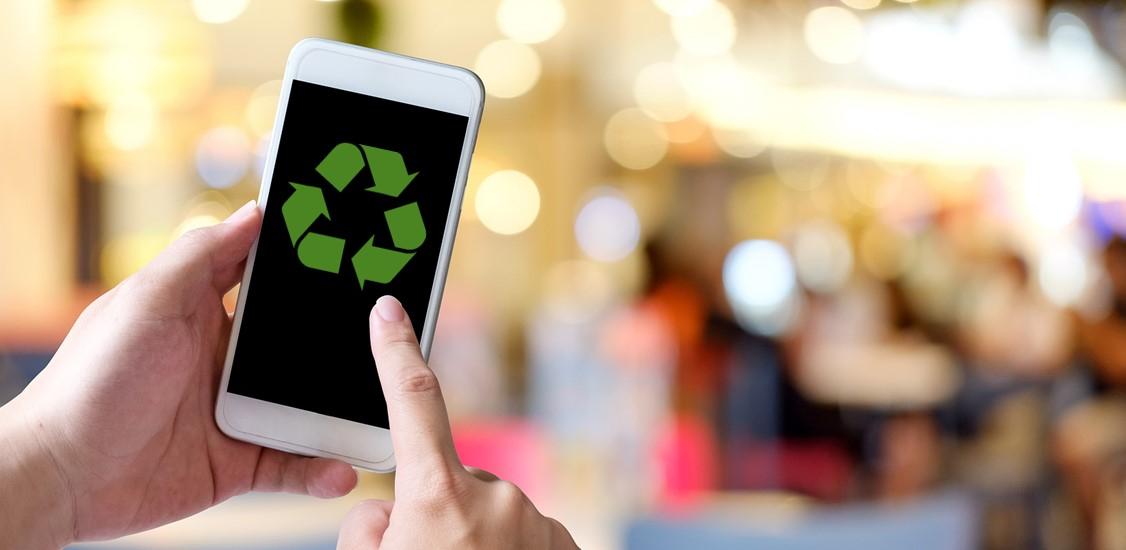Following Apple’s Q4 results, Tim Cook said: “We concluded a groundbreaking fiscal 2019 with our highest Q4 revenue ever, fueled by accelerating growth from Services, Wearables and iPad.”
But the real question is: what about iPhone sales? It seems that Apple’s diversification into other products and services has helped to distract from yet another slide in device sales. In fact, this news comes at a time when Apple's top-selling device has seen four consecutive quarters of declining sales. So how bad is the problem? And is the lack of 5G to blame?
Data shows that the average age of an iPhone at trade-in is just over three years old (3.11 years), and the trend for consumers holding onto their devices for longer doesn’t seem to be slowing down. The reasons for this can be attributed to many factors, and consumers holding out for a 5G smartphone is said to be one of them.
Yet recent research from analyst firm CCS Insights highlighted that some of the barriers to early adoption of 5G is that: consumers don’t need the latest generation of wireless connectivity, their devices are not due for an upgrade, and that 5G is too expensive.
It seems that we are in a catch-22. Consumers are holding onto their devices for longer, but seemingly don’t want to purchase devices with new innovations until they have the option to upgrade. So, how do we break the three-year hold cycle?
Trade-ins checking out
Although trade-ins are designed to help consumers subsidize the cost of their next device purchase, the amount currently being credited to them isn’t enough to make a real difference. On average, US consumers received around $100 for their device at trade-in in Q3. But with variants of the new iPhone 11 and new 5G devices hitting the $1000 mark, $100 doesn’t have much of an impact on the cost of a new device.
It seems that the days when consumers would upgrade to a new device every two years are gone. And unfortunately, consumers are losing almost half of the residual value of their devices by holding onto their devices for an extra year. This isn’t a new trend - it has been a consistent trend over the past few years. Some of the older Apple models for example, that were held onto for an additional year, resulted in almost 47% of their residual value being lost.
The long upgrade cycles we are seeing today have ultimately shot consumers in the foot - the longer they are leaving it to trade-in their devices, the less value they are getting for their devices - making new phones too costly to buy. This leaves them holding onto their devices for even longer, and a vicious hold-cycle ensuing.
Nevertheless, there could be light at the end of the tunnel. The world’s largest supplier of mobile phone chips, Qualcomm, expects to see global smartphone makers ship 450 million 5G handsets in 2021 and another 750 million in 2022. But will the uplift in 5G devices get the industry out of this catch-22?
Breaking the cycle
Consumers wouldn’t be so shocked by the cost of new devices if they replaced their device ever year to 18 months. While the high price tag on some of the latest devices can be off-putting, the value of trading-in early shouldn’t be overlooked.
For instance, the highest trade-in value for the iPhone XS in Q3 was $442. With the new iPhone 11 priced at $699, if a consumer was to a trade-in an iPhone XS and upgrade to the iPhone 11, the end cost would be $257 - making the device much more affordable.
Even if we take into account the highest spec model, the iPhone 11 Pro Max, which is priced at $1099 -- with a trade-in of an iPhone XS, the smartphone would cost around $675 - taking the device out of the $1000 price bracket that is no doubt, out of reach for many.
Creating awareness of trading in early
Device sales have been saturated for quite some time now, and one of the contributing factors has been the cost of new devices. And it seems that even the new sell of 5G isn’t enough to get customers over the line.
That being said, there is a lack of education in the market, and consumers aren’t aware of the value their devices hold if they upgrade sooner. Operators, retailers and OEMs have a responsibility to spread the word and show consumers the benefits of regular device trade-ins and upgrades.
It’s also important for these players to ensure they are responsibly recycling devices that are traded-in regularly - whether that is for insurance purposes or being used to bring connectivity to emerging markets. A device can have a second, third or even a fourth life.
If customers truly understood the value of their devices, I believe we could break the three-year device cycle sooner, rather than later.




















